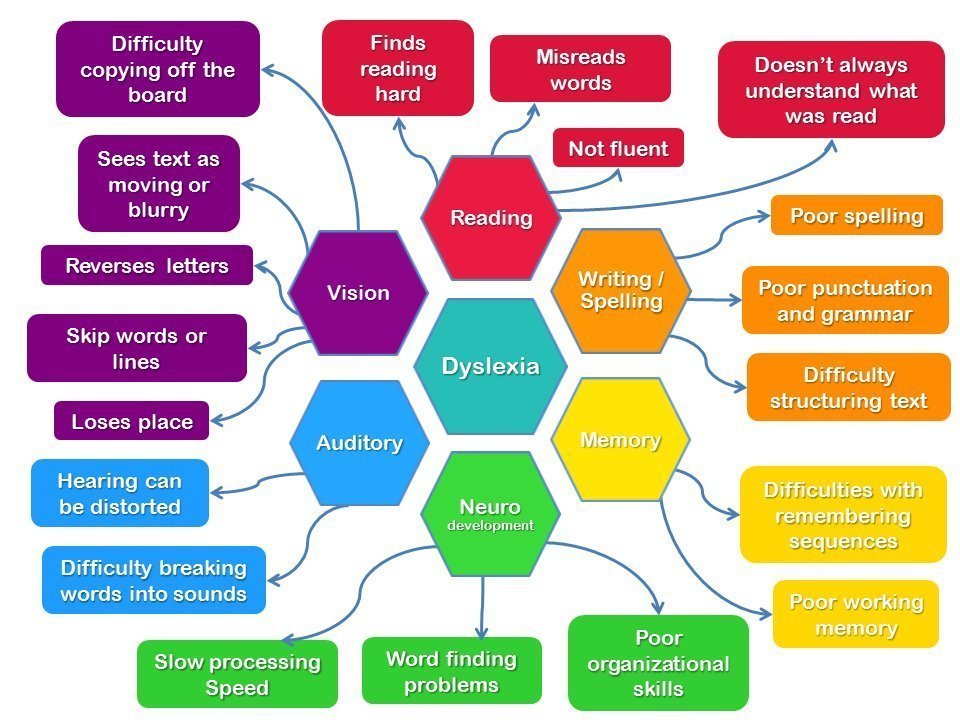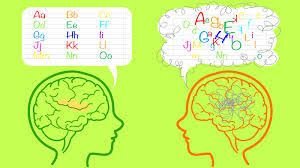April 26, 2024

Dyslexia is a learning disorder that affects reading, writing, and spelling in children. Dyslexia is
driven by deficits and difficulties in phonemic awareness ( the ability to understand sounds that
make up a language and the ability to manipulate those sounds.), which lead to difficulties in
connecting speech to print.
Dyslexia is not a learning disability that the child outgrows, it is genetic and a child with an
affected parent has 40% – 60% chances of developing dyslexia. Dyslexia is not as rare as most
people think, itt is common, about 1 in 5 children are diagnosed with dyslexia.

Dyslexia is not seeing and writing letters and words backwards or seeing the words and letters
mixed up. Dyslexia is also not a problem of laziness or lack of intelligence; surprisingly, surprisingly most
people diagnosed with Dyslexia exhibit average or above-average intelligence.
Dyslexia is not a visual problem; it is a brain-based disorder associated with impairment in the
brain region that affects the manipulation of sounds, not vision. Most importantly, dyslexia is not a
disease.`
As children get older, certain symptoms of dyslexia may look like this:
● Speech Delay
● Trouble following directions
● Repeat or omit short words such as and, the, but
● Find it difficult to tell left from right
In school, children diagnosed with dyslexia are likely to have:
● Difficulty in sounding out new words
● Lack fluency compared to other children their age
● Reverse letters and numbers when reading for example read, saw, as was
● Find it difficult to take notes and copy down words from the board
● Struggle with rhyming, associating sounds with letters, sequencing and ordering sound
● Stumble and having difficulty spelling even common words; frequently, they spell the
phonetically example, Hrbr instead of Harbour
● Avoid being called on to read out loud in front of classmates
● Become tired or frustrated from reading
Signs or Symptoms of dyslexia outside school may include:
● Difficulty keeping track of multi-step directions
● Find it difficult to decode logos and signs
● Struggle when trying to learn the rules of games
● Struggle with telling the time
● Find it especially challenging to learn another language
● Become incredibly frustrated, which can affect their mood and emotional stability
These are the signs and symptoms that can manifest in children, but it is important to know that
children who show one or a few of these symptoms may not necessarily be dyslexic, so a
A proper diagnosis, dyslexia test, and screening should be conducted.
To conduct a dyslexia screening, visit https://www.candlelightspecialneeds.org/ and book a
session with a therapist for free

● Phonological dyslexia is also known as dysphonetic dyslexia or auditory dyslexia. It
is a type of dyslexia that involves difficulty with phonemic awareness and decoding
words. Children with dysphonetic dyslexia may struggle with recognising and
manipulating individual sounds in words, which can affect their ability to read and spell
accurately.
Intervention: Interventions focusing on phonemic awareness and decoding skills can be
beneficial for children with this type of dyslexia.
● Visual dyslexia is also known as surface dyslexia or dyseidetic dyslexia. It affects
sight word recognition. Children with dyseidetic dyslexia may have difficulty recognising
and recalling whole words by sight, which can impact their reading fluency and
comprehension.
intervention : Interventions that focus on sight word recognition and vocabulary development
can be helpful for children with this type of dyslexia.
● Rapid Naming Dyslexia: It involves trouble quickly naming familiar items. Children with
this type of dyslexia may have difficulty rapidly retrieving and naming letters, numbers, or
objects, which can impact their reading fluency.
Intervention: Interventions focusing on improving rapid naming skills and increasing
automaticity in recognizing familiar items can be beneficial for children with this type of dyslexia.
● Double Deficit Dyslexia: is a term used to describe individuals who have both
phonological and rapid naming deficits in reading. It means they struggle with both
sounding out words and quickly recognising familiar items. Children with this type of
dyslexia may find reading and writing particularly challenging due to difficulties in these
two areas.
Intervention: Interventions that target both phonological awareness and rapid naming skills can
be helpful in supporting children with double deficit dyslexia.
Research is still ongoing regarding which specific interventions are best for children diagnosed
with dyslexia. All children who are or are at risk for dyslexia should receive evidence-based
reading instructions (EBRI) and their progress should be monitored over time.
CLSN as a Pathway to Hope—We’re Here to Support You! Empowering special hearts,
one flame at a time